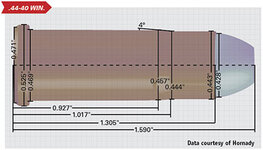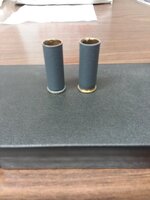- Messages
- 261
- Reactions
- 523
A while back I bought a box of "Ultramax" cowboy ammo in.44Spl.
Pulled some bullets,, they were .427, they didn't work so good in the .44Mag, it wanted some .429>.430s.
Pulled some bullets,, they were .427, they didn't work so good in the .44Mag, it wanted some .429>.430s.
















